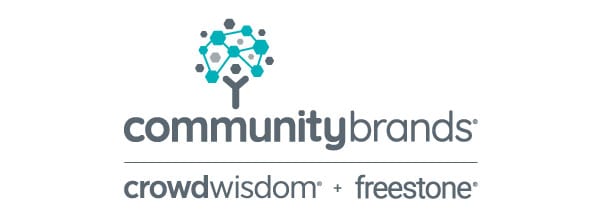
Do you wonder—or worry—about LMS ROI?
When it comes to determining whether to implement a new or replacement learning management system, it’s important to ask, “What will the return on investment be?” Oftentimes, organizations struggle to try and answer this question—or even worse, it isn’t ever asked at all.
In this episode of the Leading Learning podcast, Celisa and Jeff help you answer this sometimes daunting question and provide 5 key aspects of getting a high return on your LMS investment including: new revenue generation, cost savings, general value perception, user experience, and fulfillment of vision and mission.
To tune in, just click below. To make sure you catch all of the future episodes, be sure to subscribe by RSS, Apple Podcasts, Spotify, Stitcher Radio, iHeartRadio, PodBean, or any podcatcher service you may use (e.g., Overcast). And, if you like the podcast, be sure to give it a tweet!
Listen to the Show
Read the Show Notes
[00:18] – In this episode we address the question “What kind of return on investment will we get from implementing a new or replacement learning management system?”
It’s a question we’ve helped a lot organizations wrestle with, but we also have reasons to feel that now is a particularly good time to address this question. The main reason is that we have launched a new demonstration event for learning management systems. The event is an offshoot of our ReviewMyLMS site, and we’re calling the event Live Review.

Live Review offers an easy, effective, and affordable way to get demonstrations of platforms that are a good fit for learning businesses. Most listeners will know that by “learning business” we mean organizations that market and sell education to adult lifelong learners. That’s what we focus on here at Leading Learning, and we know from long experience that the platforms that work well for these types of businesses are quite different from the usual corporate or academic systems.
So, Live Review showcases platforms that we know meet the needs of learning businesses. To get details on how to attend Live Review and also get the recordings, go to live.reviewmylms.com.
If you do plan to attend Live Review—and even if you don’t—this episode will give you some great food for thought on how to get the most out of your learning platform investment.
Reflection Questions

[01:54] – We have the big overarching question about ROI that we will turn to to guide our discussion for this episode, but we also want to keep up our practice of asking reflection questions for you to consider during and after the episode. So, as you are listening, ask yourself:
- What are some concrete ways in which an LMS supports the creation and delivery of new products or enhances the revenue potential of existing products? What should it enable us to do that we could not do without it?
- What are some concrete and measurable ways that having an LMS in place will contribute to fulfilling the overall mission and vision of our organization?
Before moving on, see the below brief video primer to help you or the people you work with understand what an LMS is and how LMSes that work well for learning businesses are different from those used by corporate training departments and academic institutions.
[02:36] – Now, to our overarching question for this episode…
What kind of return on investment will we get from implementing a new or replacement learning management system?
In our experience, we find that sometimes organizations get bogged down with answering this question and spend way too much time and—in some cases—money searching for a precise answer. Other times, unfortunately, we discover it has not been asked at all before proceeding with choosing an LMS and potentially licensing and implementing an expensive solution.
Here are five factors to consider and try to answer—within reason—when selecting a learning management system and before signing on the dotted line for a learning management system:
[03:55] –
1. New Revenue Generation
How directly will the LMS support the creation and delivery of new products or enhance the revenue potential of existing products?
At a minimum, an LMS should enable you to increase the reach of your educational offerings, both in quantity and depth. That is, you should be able to connect with more learners, and for the learners you already serve, you should be able to engage them with additional options. While it is impossible to know the exact revenues associated with this increased reach, you should be able to make some educated guesses.
Essentially, we are advocating working with your most popular current content. Organizations often shy away from this approach thinking they need to reach new audiences with new products, but that’s one of the hardest ways to expand a business. Sometimes organizations fear they will “cannibalize” current face-to-face offerings if they offer online versions however, we’ve never seen this happen and, in fact, it’s almost always the opposite.
Some key benefits of working with current, popular offerings are:
- You have a reasonable idea of the untapped audience.
- You have an existing pricing approach to leverage.
- You usually have a good idea of what is driving demand, making it much more clear how to position and promote the new offerings.
With this information in hand, making some conservative, educated guesses about potential revenue is not all that hard—just fire up an Excel spreadsheet and run the numbers for the next three years.
[07:04] –
2. Cost Savings
In addition to any new revenue potential, what cost savings will putting an LMS in place make possible?
While putting an LMS in place—or switching to a new one—will certainly create some costs, it should also lead to productivity increases that ultimately decrease costs. In some cases, the cost decrease may be relatively small (Jeff shares an example of this).
Sponsor: Community Brands
[08:18] –If you are looking for a learning management system that is built for learning businesses and can help you both cut costs and generate new revenue, check out our sponsor for this quarter.
Community Brands provides a suite of cloud-based software for organizations to engage and grow relationships with the individuals they serve, including association management software, learning management software, job board software, and event management software. Community Brands’ award-winning Crowd Wisdom learning platform is among the world’s best LMSes for corporate extended enterprise and is a leading LMS for association-driven professional education programs. Award-winning Freestone, Community Brands’ live event learning platform, is a leading platform for live learning event capture, Webinars, Webcasts, and on-demand streaming.
[09:13] – The example shared shows that an LMS is not just about courses; it’s about managing learning, and that generally includes credits and certificates. At a higher level, an LMS is also about operational efficiency, and operational efficiency pretty much always produces cost savings.
So, take a hard look at where your costs—particularly your labor costs—are with respect to the delivery and management of education, determine the efficiencies an LMS could help create, and make some conservative estimates of the associated dollar figures.
[09:57] –
3. General Value Perception
If we implement a first or a replacement LMS, to what extent will this increase our current members’ perception of the value we provide as an organization? To what extent might it help us attract new members? To what extent may it elevate our overall brand as an important contributor to our field or industry?
To get at answers to these questions, you usually need to ask some other questions first. For example:
- How much use are your members or potential members currently making off e-learning? From what sources?
- Are they getting enough of the right types of e-learning?
- Are there segments that are being significantly under-served?
This is data that can be (though, in our experience, usually isn’t) gathered through properly crafted survey questions. If it is clear that key parts of your audience are making significant use of e-learning from sources other than your organization, then you have a clear opportunity for elevating value perception by providing new options that align with learner needs.
Additionally, using the LMS to deliver educational content in support of critical strategic initiatives can also significantly elevate value perception. If, for example, your organization has determined it must better support the pipeline of future workers into your industry, the delivery of online education to support a certification, assessment-based certificate, or series of digital badges may be a very powerful tactic.
A note of caution: Many organizations tell us they need to implement an LMS and start delivering online education simply so that they will be perceived as keeping up with the times. If that is the main driver for implementing an LMS, don’t do it or don’t do it yet. Revisit the points above and put the work into figuring out more tangible types of return.
[12:17] –
4. User Experience
How will implementing an LMS improve the overall experience learners have with our educational offerings? How will it help our offerings be more impactful—and how will we know?
While closely related to the value perception question we just discussed, user experience deserves to be considered on its own. If you are seeking to provide a better user experience, make sure you know your starting point. Don’t just rely on opinion and anecdotes. Instead, make use of services like UserTesting.com and UsabilityHub to actually test and gather useful data about the experience you are currently providing.
If you know your starting point, then you will be able to craft the most compelling vision possible for where and how much you can realistically improve on the current experience. You will also know where improvement is most needed, helping ensure that you ultimately invest in the right features and functionalities to improve that user experience.
If you clearly establish a benchmark through testing, you will be able to repeat testing over time to see how you are performing against the benchmark—a way to clearly establish whether or not an LMS is producing the desired return.
[14:09] –
5. Fulfillment of Mission and Vision
How will implementing a new or replacement LMS contribute to fulfilling the mission and vision of the organization?
While this may seem like a difficult question to answer in a measurable way, don’t ignore it. It speaks directly to the responsibility of board members—often the people who are going to have to approve the budget for an initial or replacement LMS.
Generally speaking, to the extent that you are elevating value perception, improving user experience, and supporting a financially sustainable approach to delivering education, you are already helping to fulfill mission and vision. Keep in mind that, when it comes to mission and vision, reach and impact are usually critical.
If an LMS enables you to reach many more people across your field or industry with useful learning experiences—even ones that you do not charge for—that would contribute to mission and vision for pretty much any organization. And, of course, reach can be measured.
If you are able to show that you are having an impact with the learning experiences you deliver through the LMS—that is, actually changing the field for the better by elevating knowledge, skills, and behavior—then you qualify in our books as a learning leader. An LMS alone, of course, will not achieve this.
Any learning management system is ultimately only as good as the learning experiences it supports—which must be expertly designed and facilitated—but capturing the data that shows impact, particularly through thoughtful assessment strategies, should be a strength of any well-designed LMS. You just need to know what kind of data will demonstrate impact that aligns with your mission and vision.
LMS ROI Bottom Line: It All Comes Back to Strategy
[16:43] – If you put all of these 5 factors together, it all comes back to strategy. Knowing what kind of data will demonstrate impact that aligns with mission and vision is, of course, a direct outcome of having a solid strategy for your learning and education business.

When it comes right down to it, getting the highest possible return off of implementing an LMS starts with knowing clearly the strategy the LMS supports. This is why we start with clarifying strategic objectives in our 7-step LMS selection process.
If you have your objectives solidly in place, the five points above will naturally flow from them—and you will be on the road to getting a high return off of your LMS investment.
[18:42] – Wrap-Up
Reflection Questions

- What are some concrete ways in which an LMS supports the creation and delivery of new products or enhances the revenue potential of existing products? What should it enable us to do that we could not do without it?
- What are some concrete and measurable ways that having an LMS in place will contribute to fulfilling the overall mission and vision of our organization?
If you are getting value from the Leading Learning podcast, be sure to subscribe by RSS, Apple Podcasts, Spotify, Stitcher Radio, iHeartRadio, PodBean, or any podcatcher service you may use (e.g., Overcast).
We’d also appreciate if you give us a rating on Apple Podcasts by going to https://www.leadinglearning.com/apple. We personally appreciate your rating and review, but more importantly reviews and ratings play a big role in helping the podcast show up when people search for content on leading a learning business.
And we would be grateful if you check out our sponsor for this quarter. Find out more about Community Brands.
Finally, consider following us and sharing the good word about Leading Learning. You can find us on Twitter, Facebook, and LinkedIn. We also encourage you to use the hashtag #leadinglearning on each of those channels. However you do it, please do follow us and help spread the word about Leading Learning.
[21:14] – Sign off
See Also:
- Understand LMS in 10 Minutes or Less
- The Importance of LMS Use Cases
- Association LMS Costs
- Online Learning Platforms for Solopreneurs
- Online Learning Platforms for Small Businesses


 Spanning Leadership and Learning with Dr. Wanda Wallace
Spanning Leadership and Learning with Dr. Wanda Wallace
Leave a Reply